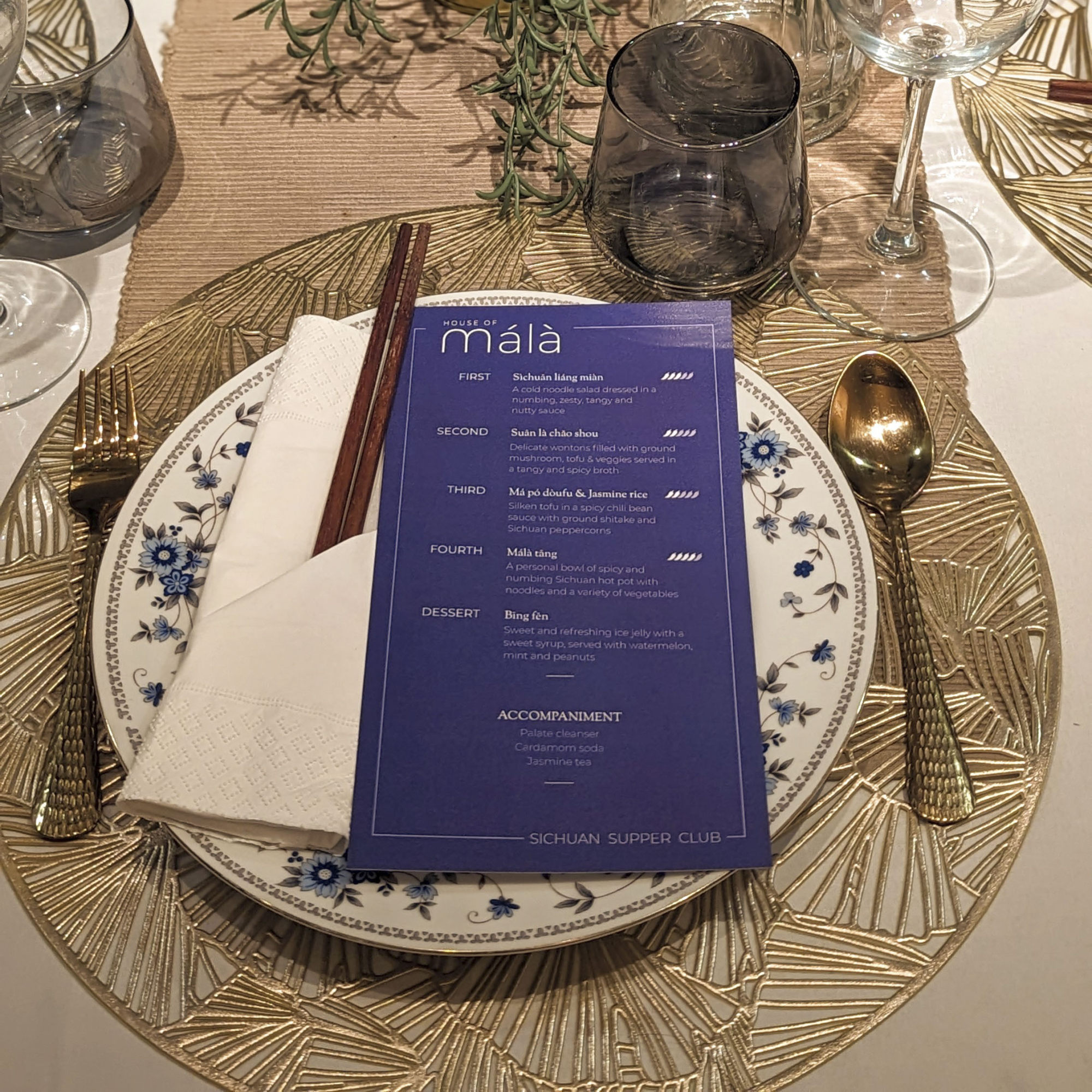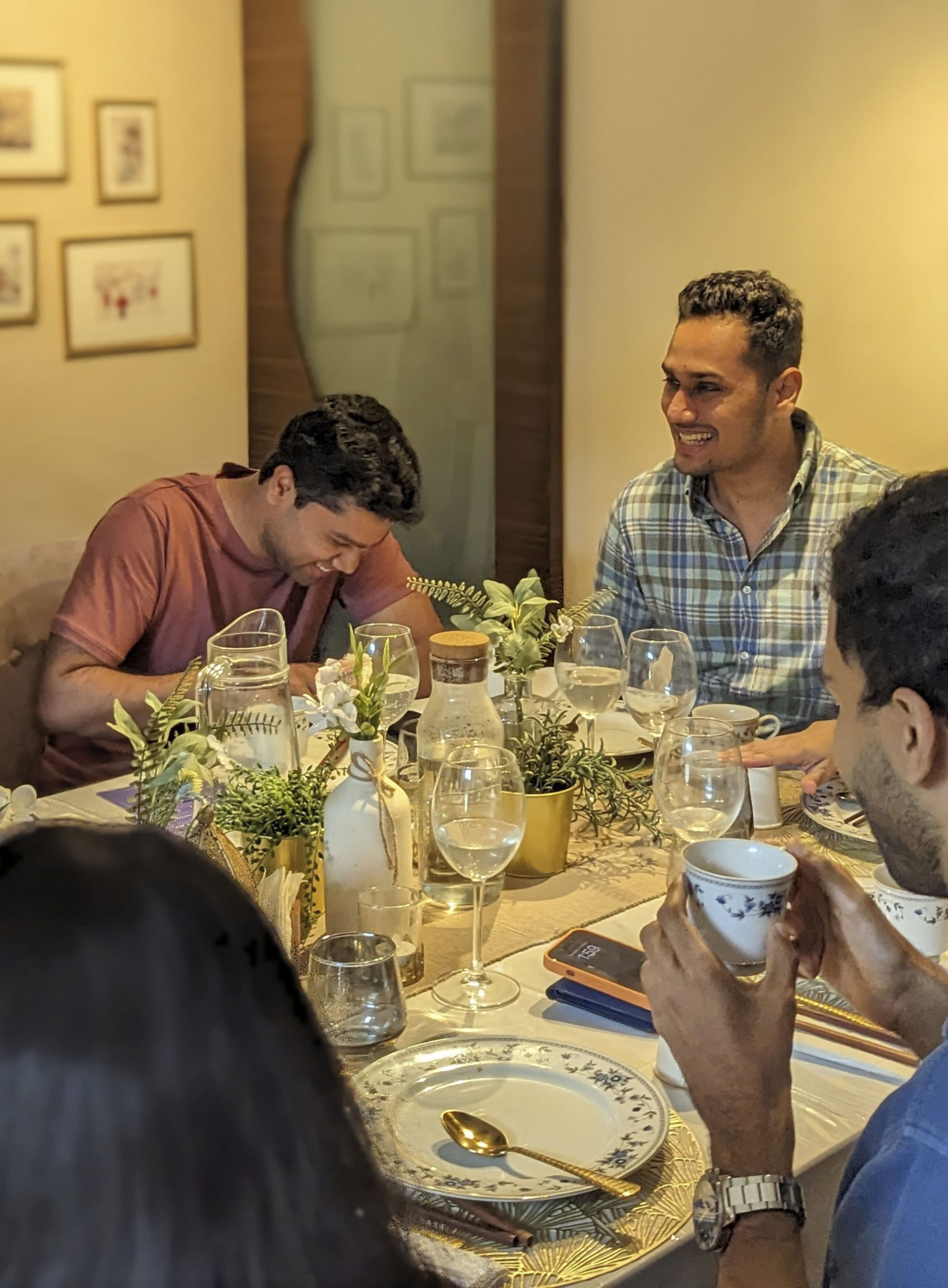When the pair travelled to Hong Kong and mainland China, they were won over by the bold and spicy flavours of Sichuan cuisine, and its liberal use of garlic and chilli peppers.
Their itinerary included Chengdu, the capital of China’s Sichuan province, which was named as a city of gastronomy in 2011 by Unesco.
The sisters realised that, although Indians are very fond of Chinese food, they generally ate Indian Chinese food adapted to suit local palates.
Struck by the absence of Sichuan cuisine in their home city, the Guptas saw an opportunity to give Mumbai diners an experience centred around spicy fare from the region of southwest China, with storytelling at a shared table where strangers could become friends while exploring new dishes.
The pair conducted numerous experiments in their kitchen over several years, using ingredients imported from abroad.
They started House of Málà in 2022, cooking the food at their home in the city’s affluent Khar Bandra suburb. Their supper club’s name is derived from the Chinese word mala that describes the heat of chillies and the tongue-tingling effect of Sichuan peppercorns – ma means numbing, while la means spicy.
Health questions: is eating tomato soup good for me?
Health questions: is eating tomato soup good for me?
House of Málà is opened for booking periodically through the club’s Instagram page, and a meal typically costs around 2,500 rupees (US$30) per head. The sisters cook four nights a week, between Thursday and Sunday, and accommodated eight to 10 guests at a time.
“Sourcing authentic ingredients for Sichuan cuisine has been both a challenge and a labour of love,” Prachi says. A number of the ingredients they have found in Hong Kong, such as green and red Sichuan peppercorns. Other items they have had to source include a variety of dry red chillies, Chinese spices, and douchi (fermented black beans).
They serve a five-course, mainly vegetarian dinner, which might start with a cold noodle salad (liang mian) served in a tangy sauce, followed by wontons filled with ground mushroom, tofu and vegetables served in a spicy broth.


For the third course, the food is served family style, with the classic mapo tofu – silken tofu in a spicy chilli bean sauce – and jasmine rice, served with shiitake mushrooms and Sichuan peppercorns.
The fourth course is mala tang, a hot bowl of spicy and numbing broth with noodles and vegetables, and the dinner ends with a refreshing dessert of bingfen, or “ice jelly”, a traditional southwestern Chinese dessert made from the seeds of the Nicandra physalodes plant (known as apple-of-Peru). Jasmine tea is served throughout the meal.
“While the House of Málà predominantly serves vegetarian dishes, [the menu] is a testament to the versatility of Sichuan cuisine,” says Prachi. “An all-vegetarian menu allows a wider audience to experience the cuisine [through its] bold flavours, the interplay of spices, and the numbing sensation of Sichuan peppercorns.” Roughly two in every five Indians are vegetarian.

Prachi is convinced that Indians have a natural affinity for Sichuan cuisine, despite how different it appears from Indian cooking.
“They have captivating similarities that transcend borders. Both [cuisines] are renowned for their unabashed love of spices, weaving intricate tapestries of flavour that balance heat with nuanced combinations of sweet, sour, salty and spicy notes,” she says.
“The culinary traditions of both regions celebrate the art of layering flavours, utilising a rich array of spices and ingredients. The prevalence of vegetarian options in both cuisines highlights a shared appreciation for the versatility of plant-based ingredients,” she adds.
Sichuan cuisine is said by some to have 24 flavours, and 20 techniques – from stir frying to pan-frying, deep-frying and boiling.
“Sichuan cuisine revolves around 24 flavours, but there are seven most important flavour profiles that are covered in our five-course set menu. Every course showcases a combination of different flavour profiles and the whole menu is curated on the basis of our favourite dishes from the region,” says Prachi.

Between the courses, to bring a bit of culture to the table, guests listen to stories about the cuisine – including the origin of mapo tofu, said to be the creation of the eponymous mapo, or “pockmarked grandma” – and play a typical Chinese dice game that’s famous in the Sichuan region.
“We’ve been overwhelmed by the enthusiasm and curiosity of our diners,” says Prachi. “People are not only embracing the bold and spicy flavours of Sichuan cuisine, but are also fascinated by the storytelling element.
“It’s been amazing to see strangers become friends over a shared dinner table and we’ve had some truly memorable moments of connection and camaraderie,” she says.
“Overall, the feedback has been overwhelmingly positive and it motivates us to continue sharing the magic of Sichuan cuisine with even more people. It’s been a rewarding journey so far and we’re excited to see where it takes us next.”
